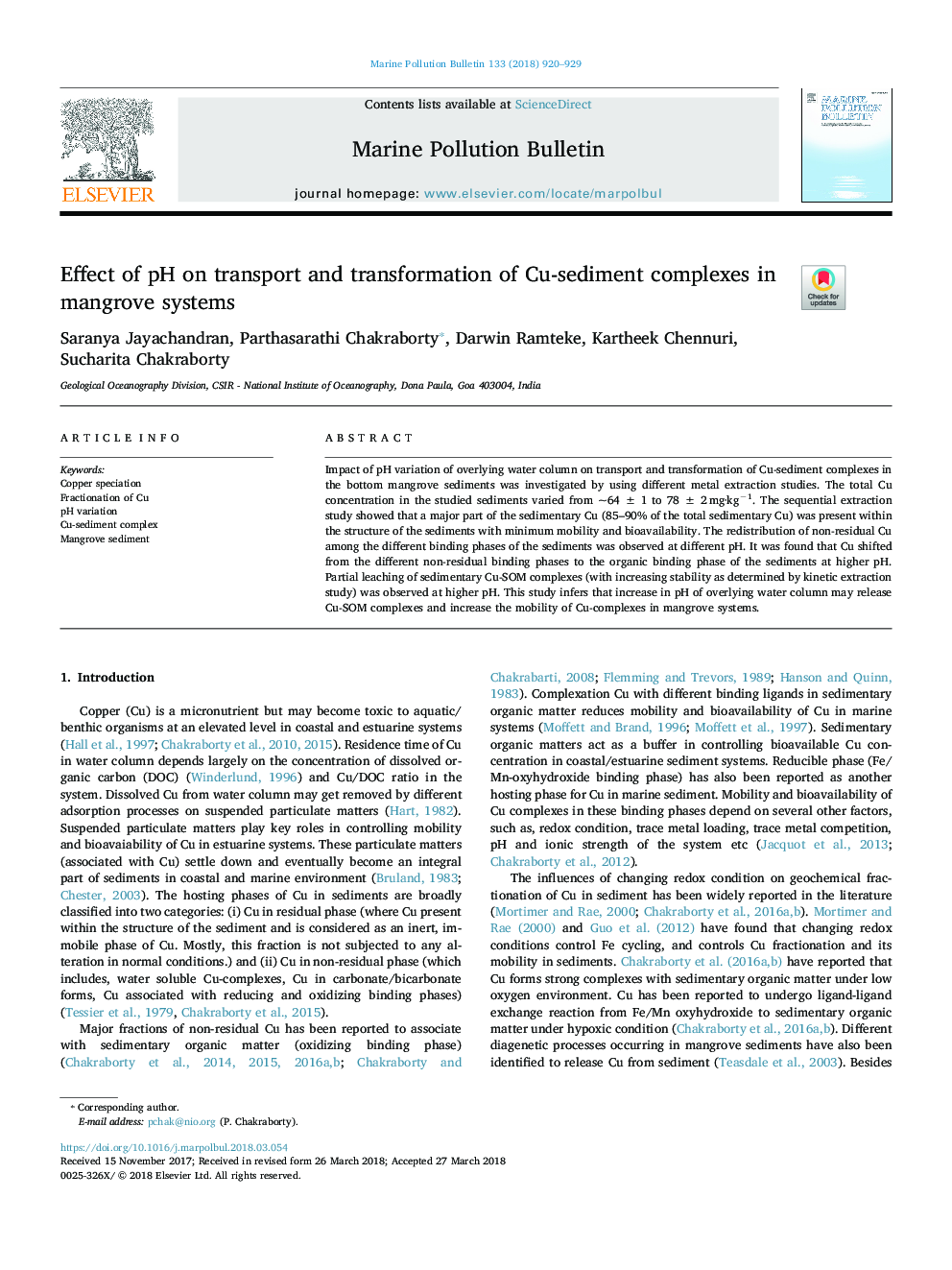| Article ID | Journal | Published Year | Pages | File Type |
|---|---|---|---|---|
| 8871322 | Marine Pollution Bulletin | 2018 | 10 Pages |
Abstract
Impact of pH variation of overlying water column on transport and transformation of Cu-sediment complexes in the bottom mangrove sediments was investigated by using different metal extraction studies. The total Cu concentration in the studied sediments varied from ~64â¯Â±â¯1 to 78â¯Â±â¯2â¯mg·kgâ1. The sequential extraction study showed that a major part of the sedimentary Cu (85-90% of the total sedimentary Cu) was present within the structure of the sediments with minimum mobility and bioavailability. The redistribution of non-residual Cu among the different binding phases of the sediments was observed at different pH. It was found that Cu shifted from the different non-residual binding phases to the organic binding phase of the sediments at higher pH. Partial leaching of sedimentary Cu-SOM complexes (with increasing stability as determined by kinetic extraction study) was observed at higher pH. This study infers that increase in pH of overlying water column may release Cu-SOM complexes and increase the mobility of Cu-complexes in mangrove systems.
Related Topics
Physical Sciences and Engineering
Earth and Planetary Sciences
Oceanography
Authors
Saranya Jayachandran, Parthasarathi Chakraborty, Darwin Ramteke, Kartheek Chennuri, Sucharita Chakraborty,
